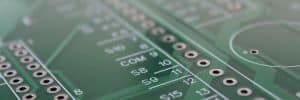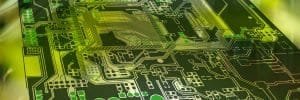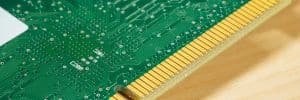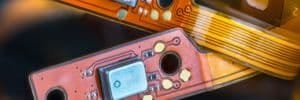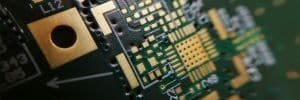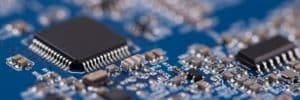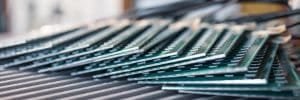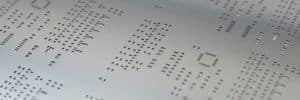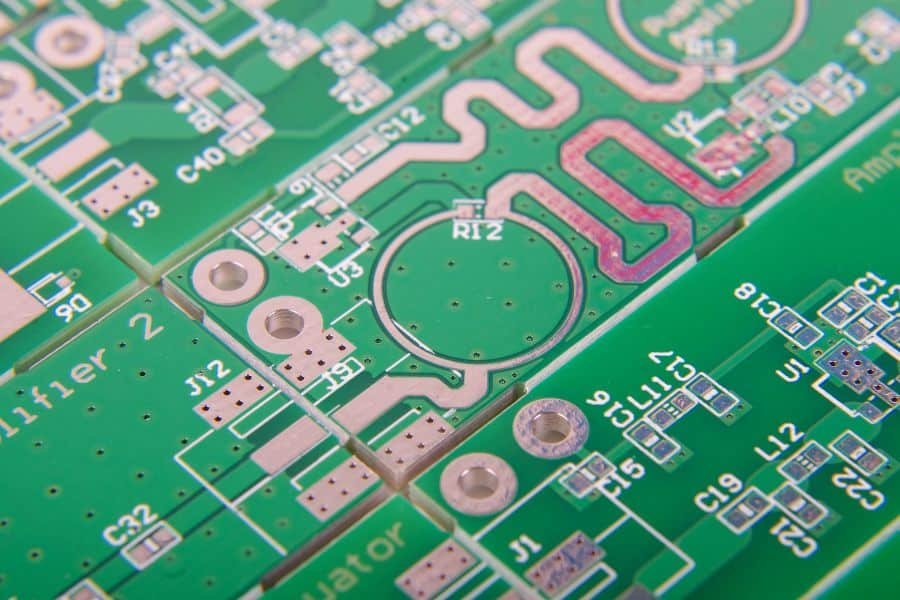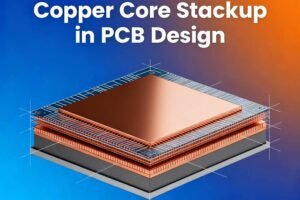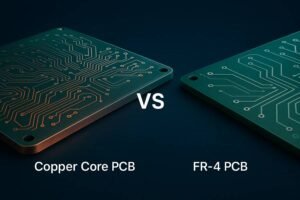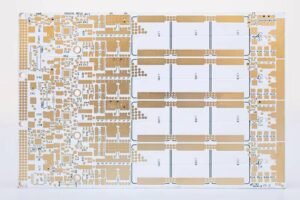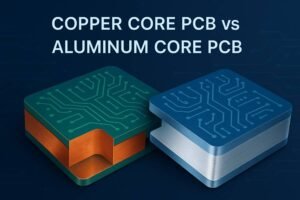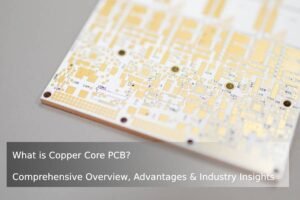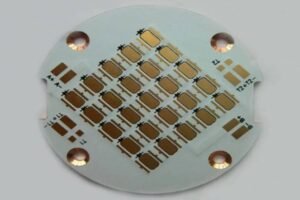Table of Contents
Selecting the perfect surface finish for your printed circuit board can make or break the success of your project. From ensuring reliable soldering to protecting against corrosion, the right surface finish enhances performance, durability, and cost-efficiency. With options like HASL, ENIG, and OSP, how do you determine which one best suits your needs? This guide walks you through the key considerations, compares popular finishes, and offers practical tips to optimize your PCB design. Whether you’re prototyping or scaling production, we’ll help you make an informed choice.
For in-depth details on specific finishes, explore our expert guides on Hot Air Solder Leveling (HASL), Immersion Gold (ENIG), Organic Solderability Preservative (OSP), and Gold Plating vs. Immersion Gold.
What Is a PCB Surface Finish and Why It Matters
A PCB surface finish is a protective coating applied to the exposed copper traces of a PCB to prevent oxidation, enhance solderability, and ensure reliable electrical connections. This critical layer acts as a bridge between the PCB and its components, impacting performance, durability, and manufacturing success.
Why It Matters
- Prevents Corrosion: Exposed copper oxidizes quickly, degrading conductivity. A surface finish shields traces, extending the PCB’s lifespan, especially in harsh environments like automotive or industrial applications.
- Improves Solderability: A quality finish ensures strong, reliable solder joints, reducing defects during assembly and improving yield rates.
- Supports Component Compatibility: Different finishes suit specific component types, such as fine-pitch or ball grid array (BGA) packages, affecting assembly precision.
- Affects Cost and Lifespan: The choice of finish influences production costs and shelf life, balancing budget with performance requirements.
Selecting the right surface finish is a strategic decision that aligns your PCB’s functionality with project goals.
Key Factors for Choosing a PCB Surface Finish
Choosing the right PCB surface finish requires balancing multiple factors to meet your project’s performance, reliability, and budget goals. Understanding these considerations helps you align the finish with your application’s needs. Below are the key factors to evaluate when selecting a surface finish:
- Application Environment: Consider the operating conditions, such as temperature, humidity, or chemical exposure. Harsh environments, like those in automotive or aerospace applications, demand durable finishes like ENIG or Hard Gold to resist corrosion.
- Component Type: Fine-pitch or ball grid array (BGA) components require a flat surface for precise soldering, favoring finishes like ENIG or Immersion Silver. Through-hole components are compatible with HASL’s robust solderability.
- Solderability Needs: Reliable solder joints are critical for assembly. Finishes like HASL and ENIG excel in solderability, while Hard Gold is less suitable for standard soldering.
- Shelf Life: If PCBs will be stored before assembly, choose finishes with longer shelf life, such as ENIG or Hard Gold. OSP and Immersion Tin have shorter shelf lives, typically 6–12 months.
- Budget Constraints: HASL and OSP are cost-effective for high-volume or prototyping projects, while ENIG and Hard Gold are pricier but offer superior performance.
- Regulatory Compliance: Ensure the finish meets environmental standards, such as RoHS. Lead-Free HASL, ENIG, OSP, Immersion Tin, and Immersion Silver are RoHS-compliant options.
By prioritizing these factors, you can narrow down your options and select a finish that optimizes performance and cost.
Overview of Common PCB Surface Finishes
A variety of surface finishes are available for PCBs, each with unique characteristics suited to specific applications. Below is a concise overview of the most common options to help you understand their primary uses before diving into a detailed comparison.
- Hot Air Solder Leveling (HASL): Applies molten solder to copper traces, creating a robust, cost-effective coating. Ideal for general-purpose PCBs and prototyping.
- Lead-Free HASL: A RoHS-compliant version of HASL, offering similar benefits with eco-friendly materials. Suited for standard designs requiring compliance.
- Electroless Nickel Immersion Gold (ENIG): Features a nickel base with a thin gold layer, providing a flat, corrosion-resistant surface. Perfect for high-reliability and fine-pitch applications.
- Organic Solderability Preservative (OSP): Uses a thin organic coating to protect copper, offering a flat, eco-friendly surface. Best for high-volume production with short storage times.
- Immersion Tin: Deposits a thin tin layer chemically, ideal for fine-pitch components but with a shorter shelf life due to oxidation risks.
- Immersion Silver: Provides a flat, high-conductivity surface, excelling in high-speed and RF applications but requiring careful storage to prevent tarnishing.
Hard Gold: A durable gold layer over nickel, designed for repeated contact, such as edge connectors.
Comparative Analysis of PCB Surface Finishes
To select the best PCB surface finish, compare their performance across key criteria. The table below evaluates common finishes by cost, solderability, shelf life, flatness, RoHS status, and applications, building on the earlier overview to align with your project needs.
| Finish | Cost | Solderability | Shelf Life | Flatness | RoHS | Applications |
|---|---|---|---|---|---|---|
| HASL | Low | Excellent | Long | Poor | No | Prototyping, general use |
| Lead-Free HASL | Low | Good | Long | Poor | Yes | RoHS standard designs |
| ENIG | High | Excellent | Long | Excellent | Yes | Fine-pitch, high-reliability |
| OSP | Low | Good | Short (6–12 mo) | Excellent | Yes | High-volume, short storage |
| Immersion Tin | Med | Good | Short (6–12 mo) | Excellent | Yes | Fine-pitch, short-term |
| Immersion Silver | Med | Excellent | Med (12–18 mo) | Excellent | Yes | High-speed, RF designs |
| Hard Gold | High | Poor | Long | Good | Yes | Edge connectors, test points |
Key Insights
- Cost vs. Performance: HASL and OSP are budget-friendly; ENIG and Hard Gold offer premium performance.
- Fine-Pitch Needs: ENIG, OSP, Immersion Tin, and Silver suit fine-pitch components.
- Specialized Uses: Silver excels in high-speed designs; Hard Gold is ideal for connectors.
- Shelf Life: OSP and Tin need quick assembly; ENIG and HASL store longer.
Practical Tips for Selecting the Right PCB Surface Finish
After understanding the factors and comparing surface finishes, applying this knowledge to your PCB project is the next step. Below are actionable tips to guide you in selecting the optimal finish for performance, reliability, and cost-efficiency.
- Define Project Requirements: Clearly outline your priorities, such as budget, application environment, or component complexity. For example, high-reliability designs may favor ENIG, while prototyping can leverage cost-effective HASL.
- Consult Your PCB Manufacturer: Engage early with your fabricator to confirm finish availability, quality control, and compatibility with their processes. This ensures alignment and avoids costly rework.
- Test with Prototypes: For critical applications, produce prototypes with different finishes (e.g., OSP vs. Immersion Tin) to evaluate solderability and performance under real-world conditions.
- Consider Assembly Timeline: If your PCBs require extended storage, opt for long-shelf-life finishes like ENIG or Hard Gold. For rapid assembly, OSP or Immersion Tin may suffice.
- Balance Cost and Performance: Assess trade-offs between cost and durability. For instance, Immersion Silver offers excellent performance for high-speed designs but at a higher cost than OSP.
- Verify Regulatory Compliance: Confirm that your chosen finish meets standards like RoHS, especially for global markets. Lead-Free HASL or ENIG are safe choices.
These steps empower you to make an informed decision tailored to your project’s needs.
FAQ: Common Questions About PCB Surface Finishes
To further clarify your PCB surface finish selection, here are answers to frequently asked questions based on industry insights.
What is the best PCB surface finish for my project?
No single finish is universally best; it depends on your needs. For cost-effective prototyping, choose HASL. For high-reliability or fine-pitch designs, ENIG is ideal. See our ENIG guide or HASL guide.
How does surface finish affect PCB performance?
The finish impacts solderability, corrosion resistance, and signal integrity, directly influencing reliability and assembly quality. For example, Immersion Silver supports high-speed signals.
Which finish is best for fine-pitch components?
ENIG, OSP, Immersion Tin, and Immersion Silver offer excellent surface flatness, ensuring precise soldering for fine-pitch or BGA components. Learn more about OSP.
Can I use multiple surface finishes on one PCB?
Yes, but it increases complexity and cost. Consult your manufacturer to assess feasibility and ensure quality control.
How long can PCBs be stored with different finishes?
ENIG and Hard Gold offer long shelf life (over 12 months), while OSP and Immersion Tin are best used within 6–12 months. Explore Gold Plating vs. Immersion Gold.
Conclusion
Selecting the right PCB surface finish is a pivotal decision that balances performance, reliability, and cost. By understanding key factors—such as application environment, component type, and budget—and comparing options like HASL, ENIG, OSP, Immersion Tin, Immersion Silver, and Hard Gold, you can optimize your PCB project. Use the practical tips and insights provided to guide your choice, and consult your manufacturer to ensure compatibility. Ready to start? Connect us to bring your design to life.

